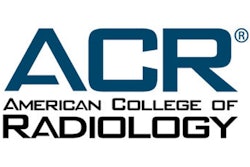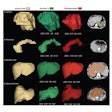American College of Radiology (ACR) CEO William Thorwarth Jr., MD, issued a nine-page letter to Congress recommending how to solve the reimbursement problem for AI in healthcare and ensure clinical AI is of value to patients and health systems.
Thorwarth's response is just one prompted by a March 20 request from the Bipartisan House Task Force on Artificial Intelligence (AI), led by U.S. Rep. Ami Bera, MD, (D-CA). Among the key questions posed by Bera is, "What measures can be employed to guarantee proper reimbursement and coverage for AI technologies in healthcare?"
Among other healthcare specialties, radiology has been a particularly active area for AI. As of May 6, the ACR estimated that there are approximately 250 U.S. Food and Drug Administration (FDA)-authorized radiology-specific AI products intended for use in a variety of applications that use diagnostic imaging data, Thorwarth's letter noted for Congress.
 William Thorwarth Jr., MD.
William Thorwarth Jr., MD.
Despite the wide availability of AI software in radiology, however, "licensing costs, support staffing, and the relative lack of reimbursement are barriers to acquisition, appropriate governance, and high-quality medical uses of AI," Thorwarth stated.
According to Thorwarth, "coding systems do not have pathways for creating procedure codes for services that are already performed by physicians -- consequently, AI that perform tasks physicians are often unable to perform during routine workflows, such as advanced quantitative functions, have fared better with the establishment of Category III CPT codes and a few Category I codes."
Thorwarth added that the U.S. Centers for Medicare and Medicaid Services (CMS) has also provided some reimbursement through Category I codes and the Hospital Outpatient Prospective Payment System (HOPPS). It remains unclear, however, that all reimbursed uses are currently adding value to patients or the health system, Thorwarth said.
CMS currently has physician-led mechanisms for determining whether a new service or medical device provides patient care value, and physician leadership must continue in any future AI reimbursement paradigm, Thorwarth noted.
To that end, Thorwarth's letter also laid out six criteria CMS should consider to ensure the safe and effective adoption of AI tools that are valuable to patient care:
- Demonstration of AI's value to individual patients or the health system, as per physician-led evaluations.
- FDA clearance that includes transparent information about the AI tool's creation.
- Adequate policies and procedures of providers, for ensuring safety, effective, and ethical use of AI, including governance, end-user guardrails and qualifications, and methods for recognizing risk and, consequently, overruling an AI result when appropriate.
- Proactive facility cybersecurity for protecting sensitive patient data that serves as the input or output of the AI.
- Provider acceptance testing before the tool is deployed in patient care.
- Continued monitoring of real-world performance longitudinally, such as to identify and mitigate performance drift, provide feedback to the manufacturer and/or oversight body where applicable to other stakeholders.
Thorwarth also gave a nod to enabling third parties to participate in AI practice accreditation and testing and monitoring.
Regarding what Congress can do to ensure access to safe, reliable AI healthcare services, Thorwarth recommended Congress expand the FDA's authority to "comprehensively encompass all healthcare AI, including software functions that do not meet the current 'medical device' definition as amended by the 21st Century Cures Act Sec. 3060."
Thorwarth also suggested creating payment policy incentives within CMS to promote widespread clinical use of high-quality AI in healthcare, saying the ACR can contribute as a CMS-designated accreditation organization of advanced diagnostic imaging suppliers.


















